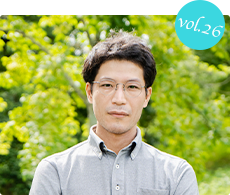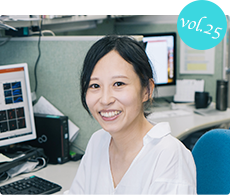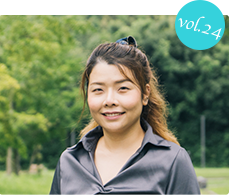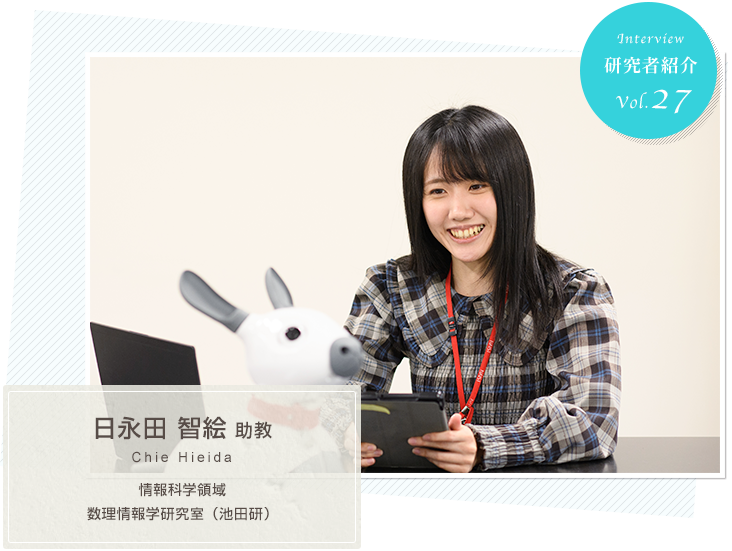
![]()
In March 2019, she withdrew from the Ph.D. program of the Department of Mechanical and Intelligent Systems at the University of Electro-Communications with a credit. In December of the same year, she received her Ph.D. in engineering, and in April 2019, she worked as a specially appointed researcher at the Research Center for Symbiotic Intelligent Systems attached to the Organization for Leading Interdisciplinary Research, Osaka University, and has been in her current position since February 2020. She specializes in human-robot interaction and affective/emotional robotics. In particular, she is currently working on the construction of emotion models.
Why did you become a researcher?
I have been interested in robots since elementary school under the influence of my older brother. I used to watch a lot of anime about robots, and I also played with Beyblade and mini 4WD. I remember participating in mini 4WD competitions with my brother.
In junior high school, there was an event that became the driving force behind my research. A family member suffered from a stress-related illness, and the doctor told me there was no cure. I was told that the cause was unknown, but that stress was involved, and I wondered if there was anything we could do as a family from now on. I thought about medicine, pharmacy, and engineering such as medical device development, but I began to think that it would be better to think of ways to prevent stress on a daily basis in the first place. I had always liked robots and had some knowledge about them, so I decided that I wanted to create a "partner robot.
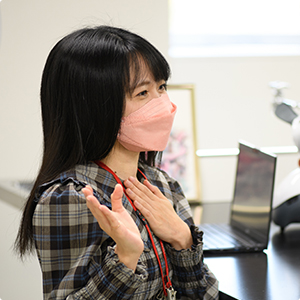
As a junior high school student at that time, my idea of a partner robot was a robot that would be a companion to a person. It was a little different from Doraemon and more like a smartphone. It was more like a smartphone, something that people carry with them every day. I thought that if even family members could not recognize the stress of their loved ones, it would not be enough to leave the house for a day and talk to them when they came home; they would need a partner who could spend more time with them, listen to their stories, and spend time with them.
If everyone has a handheld partner robot, like a fairy on a person's shoulder, and they have the same experience as the person, they can relate to things that the person can't understand just by describing them, saying, "Oh, that was so bad," and that makes them feel safe. I decided to create a robot that would be with people 24/7 because I thought that although I could not go back to my family's past, I could help prevent another person from having the same symptoms. I chose a science course in high school and entered the University of Electro-Communications.
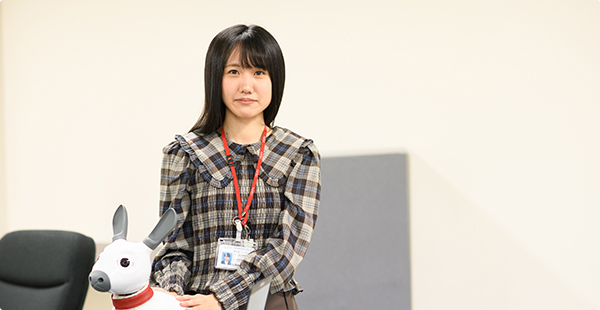
After entering the university, I joined a robotics club. What I had in mind was a robot that could drive by hand, but we didn't do that. The club was divided into several groups depending on the competitions they participated in, and there was a humanoid robot unit, but for some reason they let the robots fight. I joined the micromechanics unit because I wanted to make small robots, and I participated in a competition where we made a robot that was one centimeter in diameter that had to run through a maze, and I also had the opportunity to cut metal with a machine tool.
When people want to make a robot, they tend to start with the hardware, as I did. I understand now that simply building a mechanism is not enough to do research, but I did not understand that at the time. When I was in my third year of college and was deciding on a lab, I found that there were labs that were making mechanisms for walking on four legs and mechanisms that mimicked the flapping of a bird's wings, but I thought, "I want to make a hand-held humanoid robot. But I was worried that there were no labs that made humanoid robots that could ride on their hands (laughs).
When I visited the lab of Professor Takayuki Nagai, who later became my Ph.D. advisor, to choose a lab, I told him that I wanted to make a small humanoid robot. I remember he told me that it would be difficult to make it into a research project, but he kindly listened to me. After that, I was assigned to the Nagai lab.
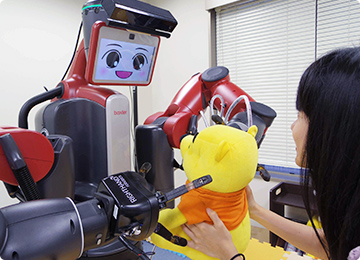
I was still reading papers, but the number of papers I read in a day (a simple number) was the highest in my fourth year of undergraduate school, and I still think those days were the most enjoyable. I had weekly discussions with Dr. Nagai, so I would read the papers up to that day and report incessantly on how to make a small humanoid robot into a research project, and he would guide me one-on-one. I think it was because of that time that I became a researcher. I then went on to a master's program, withdrew from the Ph.D. program with credits, and took a position as a specially appointed researcher in Minoru Asada's laboratory at Osaka University. I then received my Ph.D. and took up my present position at the university.
I am currently working on a model of social emotion. When it comes to "society," it is not limited to two-party relationships. For example, we all have feelings of shame about walking outside naked. The social institutions in which we live, including laws, our cultural background, and the way others look at us are all important factors. I would like to clarify how such feelings are generated through the process of actually creating a robot. I call the clarification of such mechanisms the "constructivist approach. Therefore, my research is a constructivist approach to understanding social emotions, and it is also an attempt to develop a robot with social emotions.
Daily schedule
I come to work at the university when I have experiments, but there are many days when I choose to work from home. The start time of my workday varies, but I usually spend the entire morning catching up on emails and paperwork. Then, twice a week, I attend Ikeda Lab meetings in the afternoon. Once a week I also attend the Journal Club, which presents papers. The rest of the time I have no core time, so I am free to do my research, such as programming for implementation.
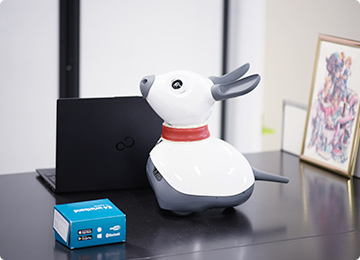
Recently, I have started experimenting, so I am stuck in the open lab space from 9:00 to 19:30 every day. I have two students helping me, and they arrive at the university at 8:00 to get ready, and we do three classes: 9:00-12:00, 13:00-16:00, and 16:30-19:30. When they are done, I clean up and go home after 8pm. If there are no experiments, I go home around 6 pm.
There are four students I am responsible for, and two of them are about to graduate. It is difficult to find a balance between research and teaching. This is the first time I have been involved in teaching as a faculty member, so it is a process of trial and error. The challenge is to balance the way I do my research with the way the students do theirs and the way the lab does its. I realize how much responsibility I have to help each student complete his or her studies.
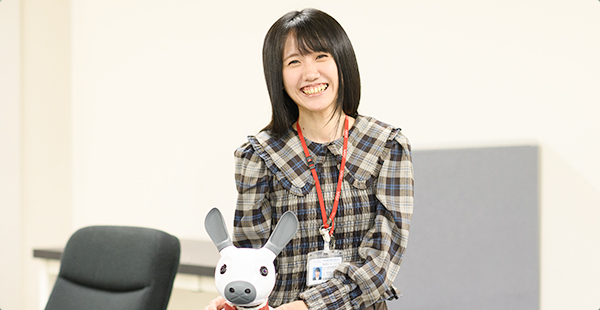
Research environment and challenges at NAIST
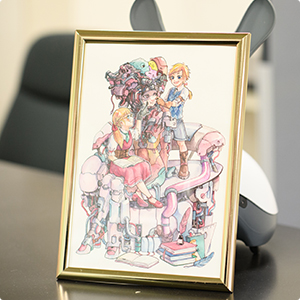
I think the research environment is very conducive. I do not have to teach many classes, which allows me to spend a lot of time on research, and even as an assistant professor, I was able to rent an open lab space and secure a laboratory.
However, since the assistant professor's room is shared with other professors, web conferencing was inconvenient for this coronal event. I sometimes chose to work from home on days when I had web conferencing all day. There is a meeting room in the lab and a soundproof booth set up by Dr. Ikeda, but other members also use it, and we cannot monopolize it all day. Recently, I was able to rent an open lab space, so I have less trouble.
I don't have a car, but it's inconvenient for me to get to the main campus. It is also a problem when I go on business trips. I often have to take the first train when I try to get there early because I might get lost on the way. It would be nice if the accessibility was better or if there were facilities to stay in Osaka, Kyoto or Hyogo.
(February 2022)

-
2021.8 updated
Data Science Center
-
2021.8 updated
Division of Biological Science
-
2021.8 updated
Division of Materials Science






